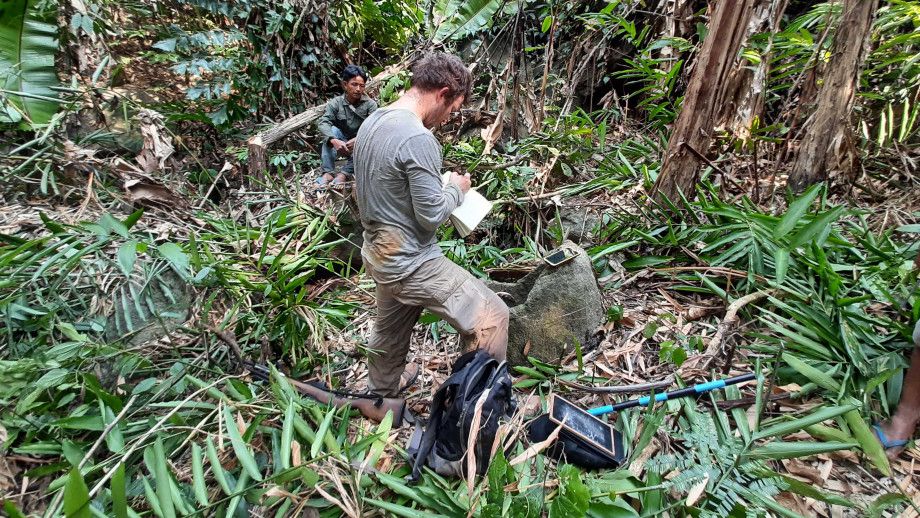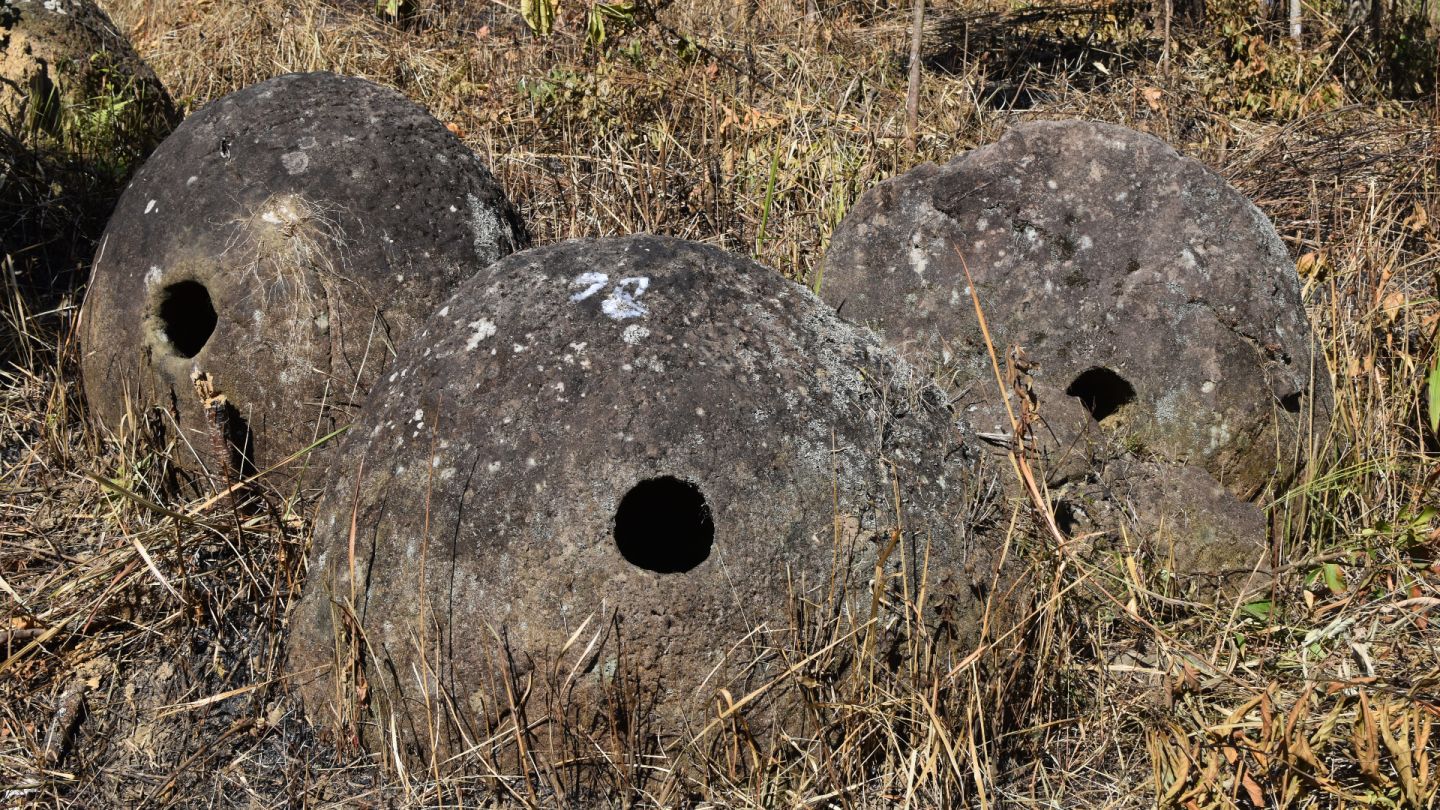Information
Ancient people in India may have buried their dead in giant stone jars
Archaeologists have discovered hundreds of ancient and immense stone jars on hillsides in the far northeast of India that may have been used in funeral ceremonies. And the human-size vessels may be linked to mysterious containers found in northern Laos about 800 miles (1,300 kilometers) away, according to one of the researchers.
Both the jars in India and the jars in Laos are about 2,400 years old and are thought to have been used in human burials, although no human remains have yet been found in the newly discovered vessels.
Prehistoric people who crafted the stone jars could have traveled between northern Laos and northeastern India, although there is no evidence yet that the same people had lived in the two locations, said archaeologist Tilok Thakuria of North Eastern Hill University in India's Meghalaya state.
"Maybe it was the same group of people," Thakuria told Live Science. "Maybe they extended where they inhabited [from Laos] into northeast India once upon a time."
British archaeologists found the first of the jars in 1928 at four sites in Assam state, just to the east of Meghalaya state, he said.
However, the region is so remote that no further work was done there until 2014, when Thakuria and archaeologist Tiatoshi Jamir from Nagaland University started investigating. They have now found 11 jar sites in the area and found a total of more than 700 jars, Thakuria said.
Ancient funerals
Some of the jar sites in northeastern India are now heavily overgrown by forest, and some of the jars are almost completely buried.
Many of the jars are tall and cylindrical, like the 10-foot-tall stone jars in Laos, but others are conical at the bottom or have the shape of two cones joined at their greatest width, Thakuria said.
Each jar has been laboriously carved from local sandstone and is large enough to hold the bones from a human body, or a body itself in a crouched position, which has been common in jar burials around the world at different times.
The jars in India may have been covered with lids, although none now seem to remain. Some are decorated with geometric carvings; and an extraordinary carved portrait of a man or woman was found on a curved stone at one of the jars sites, something that hasn't been found elsewhere, he said.
Thakuria and his colleagues have now made several field trips into the region, the latest in 2020. All the jar sites are in a small area and are located between 6 and 9 miles (10 and 15 km) from each other, mostly on the Assam side of the state border but also on the Meghalaya side.
Their latest investigations revealed more than 500 of the ancient stone jars at a single site in Assam — a greater number than at the largest jar site in Laos, where about 400 jars have been found.
Like the jars in Laos, it’s possible that the jars in Assam and Meghalaya were used for exposing the dead to the environment until only the bones would remain; or they may have been for burying the bones of dead after their bodies had been cremated or exposed, Thakuria said.
Giant stone jars
So far, however, all the jars investigated in India have been empty – but Thakuria notes the local Naga people know of the jars and report that some of them once held cremated remains, beads and other artifacts.
He said there's a chance the team will find human remains in jars that have become buried in the centuries since they were used, and so are yet to be analyzed.
The researchers now hope to return to the region in its dry season, which begins in December, to excavate and extensively document some of the jars sites. That work may include digging around and beneath the stone jars to search for offerings or human bones.
"The excavations in Laos have found bound skeletons and offerings of pottery below the jars, and we are hoping to see that pattern here," Thakuria said.
If they do find human remains, they might be able to analyze ancient DNA from the bones to learn more about the people who made and used the jars.
And while jar burials are not used in the region today, and none of the peoples who live there now claim the jars are relics of their ancestors, ancient DNA analysis might identify descendants of the jar-makers.
"We need to have more scientific research to establish the community associated with the stone jars," he said.
Thakuria is the lead author of research into the Indian jars published online March 28 in the journal Asian Archaeology. Study co-authors include archaeologists Uttam Bathari from India's Gauhati University and Nicholas Skopal from the Australian National University in Canberra.
Category: English
News
Information
Key words:












